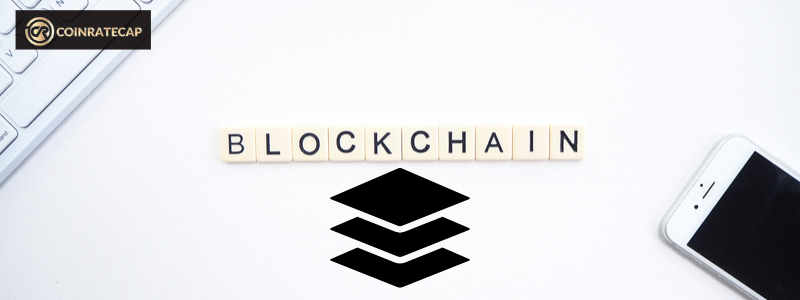
Blockchain
technology consists of multiple layers that work together to provide a
decentralized and secure platform for data transactions. The functionality of
the blockchain is handled by each layer. Understanding these different layers
is crucial for grasping blockchain
technology’s potential applications.
Read:
Blockchain Technology Vs Artificial Intelligence: All You Need to Know
Understanding
Blockchain Layers
Blockchain
layers are the fundamental architectural components that constitute a
blockchain network. These layers are designed to improve the scalability and
functionality of blockchain technology.
Typically,
a blockchain comprises multiple layers, with each layer serving a specific
purpose critical to the secure and efficient operation of the network.
Exploring
the Layered Structure of Blockchain Architecture
Participants collectively maintain, approve, and update entries in a distributed blockchain network. The architecture of a blockchain revolves around blocks that sequentially list transactions. This created network consists of multiple layers, each serving a specific purpose and contributing to the overall functionality and security of the system.

Image:
Layered Structure of Blockchain Architecture (Source: Queppelin)
Below
are the levels that make up the layers of blockchain architecture:
1. Hardware
Layer
This
is the physical framework that powers the blockchain infrastructure. This layer
contains the hardware and networking components that enable a blockchain
network to function. It contains servers, computing resources, and data centers
that make up the network infrastructure.
These
hardware and other computing resources are essential for maintaining the
operational efficiency of blockchain networks and the security of data stored
on the blockchain network.
2. Data
Layer
This
layer stores transaction details on a block. Many details are included in the
transaction, including the amount of crypto sent and received, the public and
private keys of both the sender and the receiver, and the hash of the
transaction.
Each
block is connected to the previous block. As the foundational block of the
blockchain as a whole, the genesis block is the only one that is not connected
to any previous blocks since it represents the beginning of the whole system.
3. Network
Layer
The
network layer, also referred to as the propagation layer, serves as the
communication hub for the different nodes within the blockchain. Its primary
function is to facilitate the exchange of information and data between these
nodes.
Acting
as the backbone of the blockchain network, this layer ensures the creation of
blocks and their subsequent addition to the blockchain. Through efficient
propagation, the network layer contributes to the secure and synchronized
operation of the entire blockchain ecosystem.
4. Consensus
Layer
The
consensus layer plays a crucial role in validating transactions on the
blockchain by ensuring agreement and eliminating double-spending. This layer
enforces uniformity across the entire blockchain network.
To
achieve transaction validation, all nodes within the network must verify the
transaction and reach a consensus regarding its authenticity and validity.
Thus, the consensus layer derives its name from its pivotal function of
establishing consensus among nodes, guaranteeing the integrity and
trustworthiness of the blockchain system.
5. Application
Layer
The
application layer serves as the platform where applications and smart contracts
are developed within the blockchain ecosystem. It represents the front-end
interface through which users interact with the blockchain technology.
What
sets this layer apart is its inherent decentralization concept, wherein
applications are built to operate in a distributed and autonomous manner. This
layer empowers developers to create innovative and decentralized applications
that leverage the security and transparency of the blockchain network,
enhancing user experiences and transforming traditional industries.
Unveiling the Complexity of Blockchain Layer

Image:
Blockchain Layers (Source: Reveation)
Blockchain
networks consist of different levels or protocols, each contributing additional
functionality and enhancing the capabilities of the network. Here are the
different types of blockchain layers:
·
Layer 0:
Layer 0 consists of the fundamental tools and elements that make it possible to
build and use blockchain networks like Bitcoin and Ethereum. It includes the
internet, hardware, and connections that support Layer 1.
·
Layer 1:
Layer 1 oversees consensus mechanisms, programming languages, block time,
dispute resolution, and rules that uphold a blockchain's core functionality.
Blockchain networks are typically Layer 1 solutions.
·
Layer 2:
Layer 2 solutions are secondary networks built on top of the base layer. They
work with layer one to increase the network's apacity by adding more nodes.
Rollups are a type of Layer 2 blockchain scaling solution that processes
transactions off the Layer 1 network and then uploads the data to Layer 2
blockchains.
·
Layer 3:
L3, also referred to as Blockchain Layer 3, is frequently used to refer to the
application layer. L3 projects offer a user interface that hides the
communication channel's technical specifics. Providing practical functionality
and utility to blockchain networks, L3 apps follow the layered structure of
blockchain architecture.
Read:
Layer 1 Vs Layer 2 Blockchains: What Is the Difference?
Conclusion
The layered structure of
blockchain architecture is fundamental to its design and functionality. The
various blockchain layers, including Layer 1, Layer 2, and Layer 3, work
together to enable secure transactions, enhance scalability, and provide
practical utility.
Blockchain technology consists of multiple layers that work together to provide a decentralized and secure platform for data transactions. The functionality of the blockchain is handled by each layer. Understanding these different layers is crucial for grasping blockchain technology’s potential applications.

Written by Sam